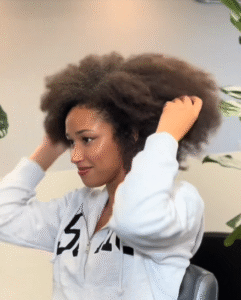Curly hair has always been unforgettable. Spirals, coils, and waves have a natural rhythm that can’t be replicated, moving with energy and light. But for decades, many people with curls felt the need to hide them. Society elevated straight hair as the standard of professionalism and beauty, while curls were dismissed as messy or unkempt. From school hallways to job interviews, the pressure to conform was constant. Countless individuals turned to flat irons, chemical relaxers, and damaging treatments, all in pursuit of a look that seemed more “acceptable.” The cost was high—hair weakened, confidence eroded, and individuality muted.
The change that has emerged in recent years is both cultural and deeply personal. The curly hair transformation is no longer just about styling tips or product swaps—it is about embracing authenticity. What was once hidden is now celebrated, with curls being worn proudly as a symbol of individuality and strength.
The key to this transformation lies in understanding what curls need. Their unique structure—twisting and bending—makes it harder for natural oils from the scalp to travel down each strand. This explains why curly hair is prone to dryness, frizz, and breakage. In the past, the products on the market made these issues worse. Shampoos filled with sulfates stripped away precious moisture, while heavy creams left hair weighed down. Today, curly hair care emphasizes nourishment and balance. Gentle cleansers protect natural oils, conditioners restore softness, and deep treatments repair years of damage. Oils like argan, coconut, and jojoba lock in hydration, allowing curls to thrive with resilience and shine.
Styling has shifted too, moving away from control and toward celebration. Instead of forcing curls flat, people are learning techniques that bring out their best shape. Finger-coiling defines spirals, twist-outs highlight natural texture, and plopping helps hair dry with less frizz. Diffusers on low heat add bounce and volume without damage. Curl-friendly creams and gels now provide hold without stiffness, allowing curls to move naturally. Protective styles, like braids and buns, have become not only practical but fashionable, giving hair rest while showcasing its versatility. What once felt like an exhausting battle has become a creative and joyful routine.
Representation has also played a huge role in the curly hair movement. Social media platforms are filled with transformation photos, tutorials, and stories from people reclaiming their curls. These communities create support systems where experiences are shared and celebrated. Meanwhile, the fashion and entertainment industries have slowly begun to reflect this change. Where once curls were straightened for photo shoots or red carpets, they are now displayed proudly. This visibility helps challenge narrow beauty standards, sending a powerful message that natural texture is worthy of admiration.
The emotional impact of embracing curls goes beyond hair. For many, it represents healing. People who once felt embarrassed by their natural texture now describe it as their most defining and beautiful feature. Parents are teaching their children to care for and love their curls from the very beginning, ensuring that future generations grow up with pride instead of shame. Each curl becomes more than just a strand of hair—it becomes a symbol of identity, resilience, and self-love.
The curly hair transformation is not a fleeting trend—it is a cultural shift. It is about rejecting outdated ideals and embracing diversity. Spirals, coils, and waves are not problems to be solved but treasures to be celebrated.
When nurtured with patience and worn with pride, curls become more than hair. They become crowns—bold, radiant, and deeply personal, reminding the world that true beauty lies in authenticity.


